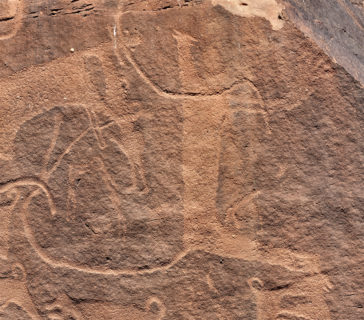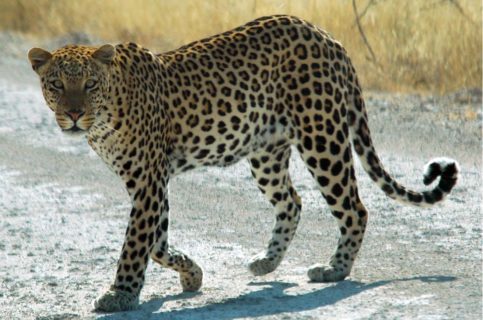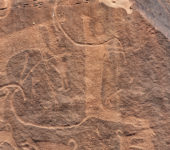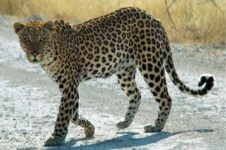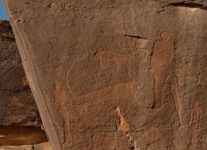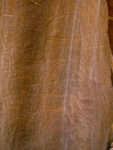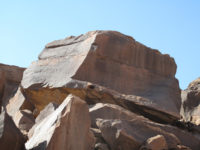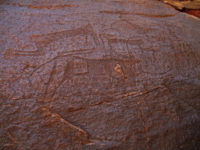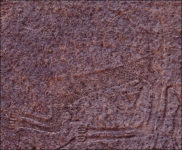Length: 95-165 cm (37-65 in)
Height: 45-80 cm (18-31 in)
Weight: male: 30-91 kg (66-200 lb), female: 23-60 kg (51-130 lb)
Description
Leopards are large and powerful cats, although they are still the smallest of the four cats in this genus. The Arabian leopard is smaller than other subspecies. Their coat varies from pale yellow to tawny, with small spots that are densely packed hollow rosettes. The ears are short and not tufted. The leopard can be distinguished from other indigenous felines in the rock art by several anatomical and positional characteristics. Unlike the cheetah, which has a domed head, the leopard has a flat cranial profile and it frequently holds its mouth open. The limbs are somewhat short, but powerful, terminating in large, rounded paws with large, curved, retractile claws. Leopards climb rocks very well and approach their prey by stalking in a crouched position, so they are shown in petroglyphs with their body vertical or horizontal, with their limbs flexed.
Leopards are very opportunistic in their choice of prey, consuming more than 90 species living in sub-Saharan Africa, ranging from insects to large antelope.
Habitat
The Arabian Leopard can be found in rugged mountains, where there is a nearby permanent water source. In arid terrain, Arabian Leopards require large territories in order to find enough food and water to survive.
Distribution
The leopard once had a much larger geographic range that included East, Central, and South and Southeast Asia, Siberia, Africa, and Arabia. Today, it is restricted to sub-Saharan Africa, with relict populations in Arabia, India, Sri Lanka, Southeast Asia, and China. The Arabian Leopard historically was found in montane regions of the Arabian Peninsula, the Levant, and Sinai. Today, it is restricted to the Dhofar region of Oman, Hajjah and Al Mahrah governorates in Yemen, and the Judean Desert and Negev highlands of Israel/Palestine.
Humans are the main cause of death for the leopard, either by poaching, habitat loss, or by poisoning a carcass of another animal for population control. Their coats are highly sought after. They are competitors with human hunters and considered highly dangerous, so they are targeted by humans.
